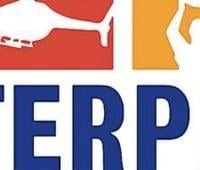
- Details
- By Native News Online Staff
-
A transformative step toward efficiency and modernization took place Friday as Navajo Nation President Buu Nygren signed a $31 million contract to implement an Enterprise Resource Planning (ERP) system.
“This is a historic moment for the Navajo Nation and Indian Country,” President Nygren said. “To meet the demands of a global world, our government must embrace modern technology to improve efficiency, transparency, and effectiveness.”
Never miss Indian Country’s biggest stories and breaking news. Sign up to get our reporting sent straight to your inbox every weekday morning.
Powered by Arctic IT and Microsoft Dynamics, the ERP system will replace outdated, fragmented processes by consolidating data, eliminating excessive paperwork, and streamlining operations in key areas such as finance, human resources, and tribal census management.
A Leap Into the Digital Era
Navajo Nation Controller Sean McCabe emphasized the significance of this change for a government serving more than 400,000 people and employing 4,000 staff members.
“This modernization is about enhancing internal operations and delivering better services,” McCabe said. “After 20 years of patchwork systems, it’s time for an overhaul. ERP will make accounting and payments significantly faster and more efficient.”
McCabe described the system’s capacity to track payments and personnel actions with ease, cutting through long-standing bureaucratic delays.
“This is a shift from quantity to quality,” he said. “By letting the system handle routine tasks, our employees can focus on more meaningful work. And by reducing consulting fees, we expect to save millions annually.”
Overcoming Decades of Inefficiency
For decades, slow and cumbersome processes delayed vendor payments and hiring. The ERP system is designed to address these inefficiencies.
“We’ve had critical priorities delayed because funds weren’t flowing correctly,” McCabe said. “This system changes that, paving the way for quicker decisions and actions.”
Transforming Human Resources and Enrollment
Reycita Toddy, director of the Navajo Division of Human Resources, sees the ERP system as a solution to long-standing inefficiencies in hiring.
“For years, we aimed to go paperless, but we kept falling back on manual processes,” Toddy said. “With this system, we’ll speed up hiring and reduce errors in personnel forms.”
A primary goal is to fill vacant tribal positions, improving service delivery to tribal members. Additionally, ERP will support tribal census enrollment, particularly for members living off-reservation.
“This system will streamline verification and enrollment for urban members,” Toddy said. “It’s about serving the community more efficiently.”
A Unified Vision for Modernization
President Nygren attributed the success of the ERP initiative to collaboration among Navajo leadership and departments, including Human Resources, Navajo Information Technology, and the Office of Management and Budget.
“This is a project for the future,” Nygren said. “It’s about leaving our government stronger than we found it.”
The system will provide tribal leaders with real-time insights into project statuses, payments, and approvals, promoting transparency and accountability while reducing delays.
A Secure and Unified System
IT Manager Tracy Shorty, who will oversee the ERP implementation, highlighted its potential to unify and protect critical data.
“This system creates a central, secure hub for all operations,” Shorty said. “It’s a significant advancement for the Nation.”
Arctic IT, a Native-owned technology firm, expressed pride in partnering with the Navajo Nation on this groundbreaking initiative.
“This is more than a technology upgrade,” said Matt Borkowski, Arctic IT’s director of business applications. “It’s about empowering people to focus on impactful work by reducing administrative burdens.”
Looking Ahead
The ERP system will be rolled out in phases over the next year, with optimism from leaders and staff about its potential to transform government operations.
“The stronger we operate, the better we serve our people,” Nygren said. “This investment will improve lives and expedite services.”
“This is just the beginning,” he added. “We’re building a government that meets the needs of today and prepares for tomorrow.”
More Stories Like This
Native News Weekly (August 25, 2024): D.C. Briefs
Native News Weekly (August 4, 2024): D.C. Briefs
Michigan AG Nessel Creates Missing or Murdered Indigenous People Task Force
Lytton Rancheria of California to Invest Up to $50M in Cadiz Groundwater Banking Project
Support Independent Indigenous Journalism That Holds Power to Account
With the election now decided, Native News Online is recommitting to our core mission: rigorous oversight of federal Indian policy and its impact on tribal communities.
The previous Trump administration’s record on Indian Country — from the reduction of sacred sites to aggressive energy development on tribal lands — demands heightened vigilance as we enter this new term. Our Indigenous-centered newsroom will provide unflinching coverage of policies affecting tribal sovereignty, sacred site protection, MMIR issues, water rights, Indian health, and economic sovereignty.
This critical watchdog journalism requires resources. Your support, in any amount, helps maintain our independent, Native-serving news coverage. Every contribution helps keep our news free for all of our relatives. Please donate today to ensure Native News Online can thrive and deliver impactful, independent journalism.












